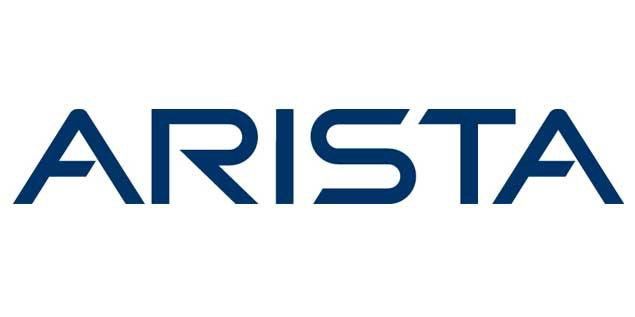I was reading yesterday the Mary Mecker’s Internet Trends 2014 Report and some of the stats that surprised me were the Global Technology IPO Issuance, 1990–2014YTD (Slide # 21) and the USA Technology Venture Capital Financing, 1989–2013 (Slide # 22). These stats highlighted the global impact that tech sector is making around the world, and the constant growth of Venture Capital raising of tech companies.
Did you read at GigaOm the insane amount of capital that Uber raised for a 17 billion valuation?. Ok, I understand: it’s much better to have a lot of cash in the bank (based in experts, every company should have enough cash for 18 months), but why every founder is concentrated in capital raising, instead to focus in revenue generation, and to build a profitable business.
Don’t make me wrong, I love Uber, even, I put them like one of the best examples of a Mobile focused company, but my concern is about if Uber’s team needs this huge amount for the global expansion? I don’t know.
There are many companies which have become in great organizations, even without outside capital; or others which have requested the right capital with a detailed strategy to use it wisely. I will talk about two companies which one of the them is of the “NotVC” side, and another which have raised the right amount of capital. These two companies are: Arista Networks and Wealthfront.

Arista Networks: Focus on revenue, not in Venture Capital
When I saw that Benoit “tsuna” Sigoure left his high paid job at StumbleUpon and was hired by Arista Networks; I said to myself: “Umm, this company should be doing something remarkable in the hard cloud networking world if “tsuna” was to work there”.
Benoit is the lead developer of OpenTSDB, the time-series system for service monitoring using HBase like its main database; so he is a very respected System Engineer with a singular passion for Unix/Linux kernel internals, Java programming, HBase’s schema design and more. He is the main developer for asynchbase, the great library to access HBase asynchronically, which allows to obtain a better performance. So, when you see to this kind of professional to join to one company, the question that comes to the mind is obvious: What this company is doing which need this kind of professional?
What makes Arista Networks products unique?
Arista Networks is a Software company, particularly in the new trends of Software Defined Networking (SDN), competing with large hardware-focused organizations like Huawei, Cisco and Juniper Networks.
They make a family of high performance switches, where the key is in the quantity and quality of research that is inside the devices: EOS (Extensible Operating System), the industry-leading Linux-based network operating system, developed by world-class engineering teams based in Santa Clara (California), Vancouver (British Columbia, Canada) and Bangalore (India).
I discussed this with Benoit about why Arista’s advantages are in the software, and this was his answer:
For me the most important thing to note is that Arista is a software company, particularly inside the Software Defined Networking (SDN) trends. This is what makes Arista fundamentally different from the other big network vendors.
Cisco in particular, is a hardware company. And a hardware company can’t become a software company overnight. It’s a big culture shift for them. And they’re trying to do it.
Because these days, the value is in the software. This doesn’t mean that there is no value in the hardware, the hardware is still super important.Now if you go out in the market and you buy two different phones or two different computers with the same CPU inside, that doesn’t mean that they will work just as well.
They are a lot of other factors that come into play to determine how well the overall system is designed. And even on this front, Arista has been doing very well, with systems that generally run using fewer components and that thus consume generally less power than other comparable systems using the same chips inside.
But again, overall, it’s the software that makes all the difference. And that’s why Arista is gaining momentum. Because Arista is fundamentally a software company, so they understand how to build modern software for networks, that’s easy to integrate with, easy to script and automate and extend.
So, he sent to me the whitepaper that describes why EOS is a remarkable piece of engineering. EOS, in simple terms, combines modern-day software and operating system (O/S) concepts, transparently restartable processes, open platform development, an un-modified Linux kernel, and a stateful publish/subscribe database model called SysDB, which is an in-memory database (machine generated at run time), which runs in user space and contains the complete state of the system.
Like traditional databases, Sysdb does not contain any application logic and is only responsible for keeping state. However rather than being optimized for transactions, Sysdb is designed for synchronizing state among processes, also called ‘agents’, by notifying interested processes or agents when there is a change. To see some of the key features of EOS, you could read this quick reference.
When I began to learn this whitepaper, I was excited to read all this, because for my background in System Engineering and a proud Linux user since 2004, I liked the fact to see that Linux is in the core product of the company; so they strongly believe that Linux and Open Source in general could be used to build world-class products highly competitive in this very hard industry.
More and more Enterprise customers are coming
It seems that they are doing it immensenly good, because they have a lot of Enterprise customers. Companies like Microsoft, Facebook, Citigroup are using Arista’s products for its core business, redefining its data centers networking infrastructure with these new switches. But, there are a lot of room to growth in this sector.
For example Amazon and OpenDNS are other companies that its main business relies in high speed networking so, they could become in new customers for Arista’s products.
They have achieved all this without outside capital
Yes, for me this is the best part, because they have done all this without any outside capital. The founders of the company gave the main amount of capital to create and expand the company, and after ten years, Arista Networks is a profitable company and officially went public (under ANET symbol) in June 6th. According to Bloomberg, the company has a market cap of $3.7 Billion raising more than $226 million in capital. This is one of the reasons why I admire to this company and its management team: for focusing allways since day one to become in a profitable business building a world-class family of products, not in raise capital and more capital. This is one of the best company strategies that I’ve seen in the tech world, and this case easily could be a good study case for MBAs discussions and classes. But now, we will see the other side of the card: Raising the right quantity of capital and build a strong strategy behind.

Wealthfront: 1 Billion is cooler in these days
Since I had the pleasure to read the 2013 Silicon Valley Career Guide written by Andy Rachleff (now Wealthfront’s Executive Chairman) and Elizabeth McBride; I’ve wanted to write some lines about the company. I mentioned partially in my post about Pure Storage and I think that now is the right time to do it. Wealthfront is in the automated invesment business using Exchange Trade Funds (ETFs) like its base using a tax-loss harvesting strategy with the lowest fees of the market, where the accounts under $10,000 are free to manage, and the accounts that above of that number; they apply a small fee for its management. To know more about the services that they provide, I encourage you that you should visit its site.
In June 4th, Adam Nash, CEO of Wealthfront announced that they officially have 1 Billion of assets under management (AUM). This is an amazing achievement for a company with less that three years in business. This kind of stats makes me wonder why this team have been so successful in such short time. Before to raise capital from Greylock Partners (where Nash was first an Entrepreneur in Residence), they were building a world-class team in all key departments of the organization: Investment Management (Charles Ellis, Chief Investment Officer and Burton Malkiel), Finance Research (Qian Liu, VP of Research, CFA), Engineering (Avery Moon, VP, Research and Engineering) and Marketing (Andrew Johns, Director of Growth and Revenue, @ibringtraffic and Maya Grinberg, Marketing Director, @papayamaya), and then were executing its business strategy growing with a steady and strong growth. United to this, the Wealthfront’s team have become in a content generation machine for their clients writing targeted blog posts about Stock options and RSUs, career planning, investing insights, and more.
The Silicon Valley Career Guide is a live prove of that. They are thinking in the long term, so they have raised $65.5M until date from Index Ventures, Greylock Partners, Ribbit Capital, The Social+Capital Partnership, DAG Ventures, Marissa Mayer, Kevin Rose, Paul Kedrosky, Mark and Ali Pincus, Alison Rosenthal and Tim Ferris, and I think that they could grow a lot yet because Wealth Management industry is huge (estimated in trillions).
Well, I think for the size of this industry, Semil Shah put them in the list of the “Decicorns”, which are the companies which have achieved $10b+ of enterprise value (even in private market valuations) like Uber, AirBnB and Dropbox:
Wealthfront: Why? This one is straight-forward: Software applied to a trillion-dollar market. To date, private wealth managers cull lists and network to find clients with net worth over $1m+ to manage their money. Why not use software instead? Part of this is a demographic change, where generations coming up might likely prefer their banking experiences to be automated and accessed through a desktop or mobile native interface. Beyond the UX, Wealthfront could provide more transparency around allocations and use math to power software that more efficiently balances stocks, bonds, and other assets according to an individual client’s particular tastes. Wealthfront could harness software to make Modern Portfolio Theory even more efficient, and that alone gives it a chance to be massive.
Final Thoughts
So, Arista Networks and Wealthfront have built world-class teams for its respective industries using different strategies for capital raising, but with a mutual objective always in mind:
Focus to become in a profitable business since day one. If you do that, to chances to raise capital will come easier for you
Like I always do for the companies that I cover in my articles here, I will let you my favorite open positions from them, so it’s up to you to select your dream job in one of these companies. Arista Networks Careers site is full of opportunities, and Wealthfront’s Careers are more updated in the LinkedIn’s company site. My favorite positions are:
- Software Engineer at Arista Networks (Santa Clara, CA or Vancouver, BC)
- Platform Engineer at Arista Networks (Santa Clara, CA or Vancouver, BC)
- Backend Engineer at Wealthfront (Palo Alto, CA)
- Mobile Engineer at Wealthfront (Palo Alto, CA)
Thanks for reading !!!Marcos Ortíz Valmaseda about.me/marcosortiz @marcosluis2186




